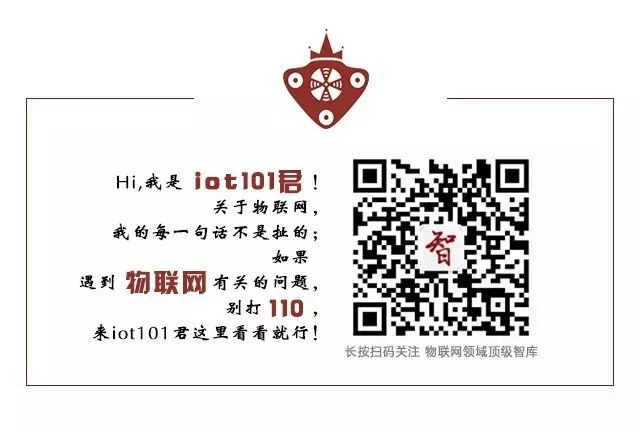
Author: Zhao Xiaofei
IoT Think Tank Original
Please indicate the source and origin when reprinting
—— [Guide] ——
Even if 5G was commercialized in 2019-2020, NB-IoT/eMTC will still be the main communication method for cellular IoT in the coming years, and NB-IoT/eMTC has become a part of the 5G IoT.
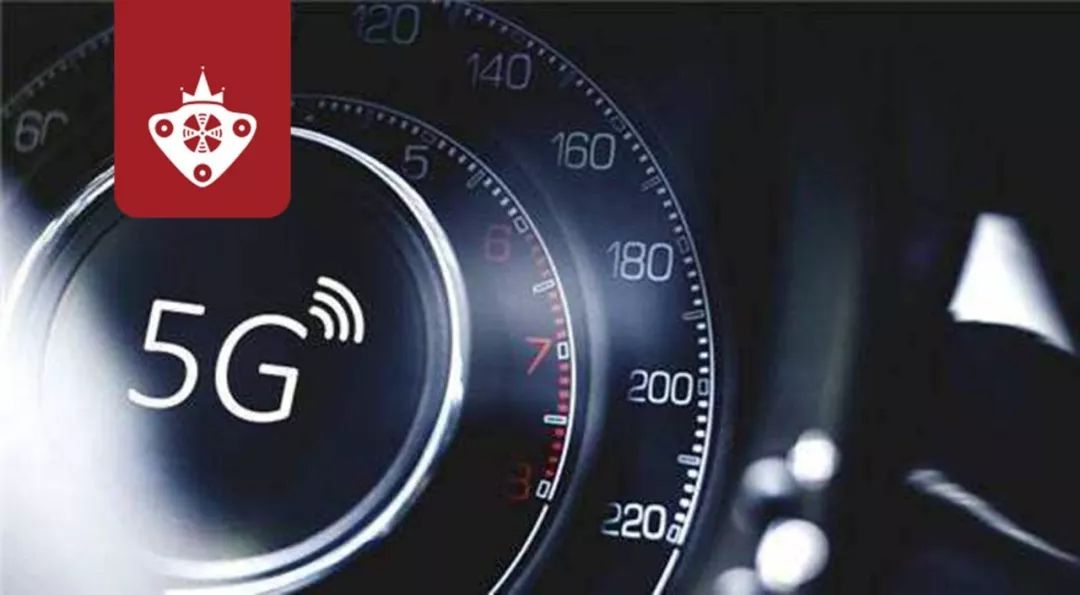
From May 21 to May 25, the International Telecommunication Standardization Organization 3GPP held a meeting in Busan, South Korea, to discuss the first standalone (SA) standard for 5G, which has attracted widespread attention in the industry. This is a milestone moment, and the first 5G standalone deployment standard is expected to be released in June this year. However, the upcoming 5G standards primarily focus on enhanced mobile broadband communication for human-to-human interactions and do not involve low-power, massive connectivity IoT scenarios. Recently, GSMA released a report titled “Mobile IoT in the Future of 5G,” pointing out that mobile IoT (M-IoT), represented by NB-IoT/eMTC, is part of the future 5G IoT strategy, clarifying the relationship between the now commercially available NB-IoT/eMTC and future 5G. In the next few years, low-power, massive connectivity based on cellular networks will still mainly rely on NB-IoT and eMTC.
The 5G standard plan that meets ITU’s low-power, massive connectivity requirements has not yet been determined
As is well known, 5G mainly covers three major scenarios: enhanced mobile broadband (eMBB), ultra-reliable low-latency communication (uRLLC), and massive machine-type communication (mMTC). Among them, uRLLC and mMTC are aimed at the application needs of IoT, with mMTC designed for future scenarios that require massive, low-power, low-bandwidth, low-cost, and low-latency communications. However, from the current progress of 5G standards, mMTC standards are the most controversial area. According to the previous plan for 5G standards, the standard for independent networking was to be completed by June 2018, and the recent 3GPP meeting in Busan, South Korea, was held to discuss this plan; by the end of 2019, the R16 version was to be released, which would meet all the requirements set by the International Telecommunication Union (ITU) for 5G standards. However, it now appears that this plan may be delayed, with the controversy revolving around the standards for massive machine communication.
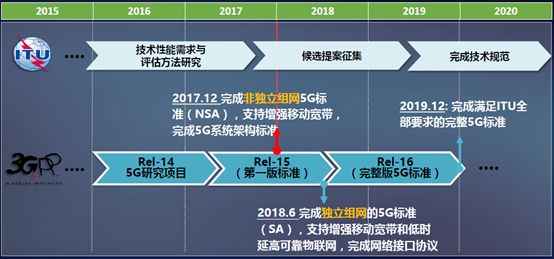
Source: IMT2020 Promotion Group
However, at the 79th plenary meeting of the 3GPP Wireless Access Network held in Chennai, India, from March 19 to 22, it was clarified in the proposals for R16 that the R16 version of the 5G new air interface would not study or standardize use cases for low-power wide-area IoT. The low-power wide-area IoT use cases will continue to rely on the evolution of NB-IoT and eMTC. In other words, the standardization of low-power massive connectivity scenarios according to ITU’s vision and requirements will not be completed in the R16 version by the end of 2019, and the standard plan for this scenario is still undecided, so the release time for the complete 5G standard is also uncertain.
Integrating NB-IoT and eMTC into the 5G IoT family
Since the standardization plan for mMTC in R16 is undecided, but there is already a demand for low-power massive connectivity IoT, there must be relevant technologies to support it, and both NB-IoT and eMTC, which are also 3GPP-led cellular communication standards and have already been commercially validated to some extent, have been integrated into the 5G IoT family.
The revolutionary aspect of 5G is not only that it covers more application scenarios and more complex technologies, but also that it has a stronger inclusiveness. Therefore, one of the cores of 5G is to support and be compatible with various access technologies, such as satellite, WiFi, fixed networks, and other 3GPP technologies to achieve interoperability, serving a large number of different use cases. This also creates conditions for NB-IoT and eMTC, which are also 3GPP technical standards, to become part of 5G.
Of course, the inclusion of NB-IoT and eMTC into the 5G IoT family is not solely decided by 3GPP. 3GPP conducts multiple evaluations based on the requirements of the ITU. Generally speaking, the ITU proposes the vision and requirements for 5G, and 3GPP organizes major global vendors to promote the standardization work to meet the KPIs set by the ITU, which is finally adopted as an international standard by the ITU. In the past period, 3GPP proposed to the ITU that NB-IoT and eMTC meet the ITU’s requirements for 5G IoT, conducting extensive evaluation research and proposing at the 79th plenary meeting that low-power wide-area IoT use cases will continue to rely on the evolution of NB-IoT and eMTC.
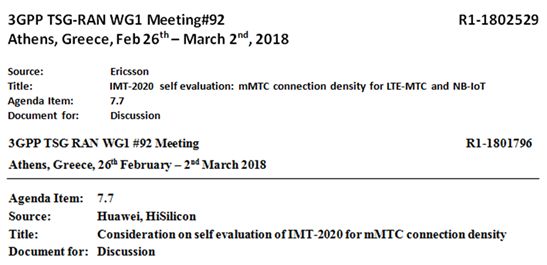
NB-IoT/eMTC meets the 5G IoT demand assessment (Source: 3GPP)
At a 3GPP meeting held in Athens, Greece, relevant companies submitted a demand assessment report regarding NB-IoT and eMTC meeting the 5G mMTC connection density requirements. The conclusion of the report showed that NB-IoT and eMTC met the ITU’s requirements for 5G mMTC connection density, laying the foundation for the inclusion of NB-IoT and eMTC into the 5G IoT family. The two assessment reports are shown in the above image.
In March this year, Sierra Wireless, Ericsson, Altair, and 20 other well-known manufacturers jointly released an assessment report stating that LTE-M (eMTC) meets 5G requirements. The report evaluated from multiple aspects, including unit capacity bandwidth requirements, data rates, message latency, and battery life, showing that eMTC’s performance fully meets the ITU’s requirements for 5G IoT.

Assessment results of 20 companies on eMTC meeting 5G requirements (Source: Sierra Wireless)
Since 5G has many components that will be standardized and commercialized faster than low-power massive connectivity scenarios, NB-IoT and eMTC need to coexist with other technologies of 5G in the long term. One of the tasks that 3GPP is undertaking is to support the deployment of NB-IoT and eMTC within the 5G NR bandwidth.

Source: GSMA
Additionally, to support NB-IoT and eMTC from the 5G system side, 3GPP began researching the support of NB-IoT and eMTC in the 5G core network in its report in April this year, ensuring that operators can smoothly upgrade to 5G NR while retaining NB-IoT and eMTC network deployments.
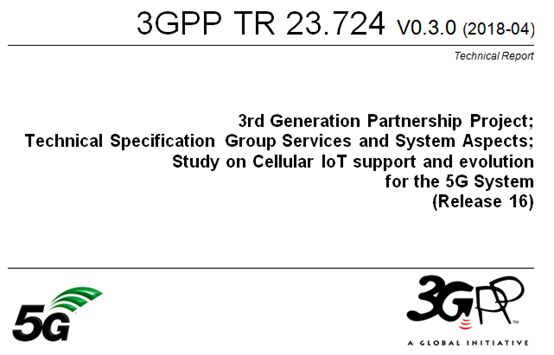
This report studies 5G system support for NB-IoT/eMTC (Source: 3GPP)
After extensive evaluations and efforts in standardization, NB-IoT and eMTC and their evolution have been incorporated as components of 5G IoT, and for a long time to come, low-power wide-area IoT applications based on cellular networks will mainly rely on NB-IoT and eMTC until the future 5G mMTC standards are frozen and commercially deployed.
Enthusiasm and Rationality: The Development of 5G IoT Still Requires Scaled Demand
The public enthusiasm for 5G is high, and the freezing of the first standard this year also conditions for rapid commercialization. However, trial commercialization can be driven by standards and technology, but large-scale commercialization ultimately requires scaled demand. Similarly, the order of standardization for the three major scenarios supported by 5G is also significantly influenced by demand-driven factors.
(1) Enhanced mobile broadband has a foundation for large-scale commercialization, but the growth rate will still not be too fast
The non-standalone networking standard frozen last December and the soon-to-be-completed standalone networking standard primarily address enhanced mobile broadband (eMBB). The early completion of this part of the standard is largely due to the clearer demand for enhanced mobile broadband compared to low-latency high-reliability and low-power massive connectivity.
In the past few years, the commercialization of 4G networks has brought about a large-scale demand for mobile broadband (MBB) and users, resulting in explosive growth in traffic and promoting prosperity across the entire industry chain including chips and terminals. Based on the long-term accumulation of MBB and users’ demand for high bandwidth, eMBB’s further upgrades in bandwidth and rate are significant for achieving a better user experience and meeting the needs of applications such as ultra-high-definition video, AR/VR, etc. From this perspective, the eMBB scenario has both a foundation from previous accumulations and new demands, thus facilitating rapid standardization and commercialization.

Predicted number of 5G connections in China (Source: GSMA & China Academy of Information and Communications Technology)
However, even for this scenario with a commercial foundation, 5G eMBB is not expected to achieve explosive growth. GSMA experts have pointed out: “Although 5G is popular, the largest growth range is still expected to be 4G by 2025.” The “China 5G Report” jointly released by GSMA and the China Academy of Information and Communications Technology also shows that the deployment speed and popularization process of 5G are expected to be slower than that of 4G, with early 5G networks primarily deployed as hotspot technologies to supplement existing network capacity, and operators indicating that network deployments will be based on demand.
(2) First, do a good job in meeting the low-power massive connectivity IoT needs with NB-IoT/eMTC
Since the mobile broadband of 4G has had years of large-scale accumulation and demand verification, and the expected development of enhanced mobile broadband in the 5G era is still slower than 4G, the emerging demand for low-power massive connectivity IoT has not accumulated large-scale commercialization in the past years and remains in various predicted data for future demand. Therefore, the urgency for its standardization and commercialization efforts does not seem so pressing. In my view, this is an important reason why 3GPP postponed the standardization of mMTC in R16 and incorporated the existing NB-IoT/eMTC standards into the 5G IoT.
From the market situation, the NB-IoT/eMTC standards have been frozen for two years since 2016, and we have not seen explosive growth in IoT applications adopting this technology. The low-power massive connectivity scenarios have not formed the accumulation of large-scale demand. Imagine, when the IoT scenarios faced by NB-IoT/eMTC have not yet formed scale, will the upgraded 5G mMTC have large-scale scenarios? When, in actual commercialization, NB-IoT/eMTC only achieves an average of hundreds of terminals connected per base station, far from the tens of thousands of terminals capacity, what significance does the 5G mMTC standard of achieving one million terminals per square kilometer have?
From the perspective of industry chain maturity, the future 5G mMTC will need to achieve low-power massive connectivity goals through new technologies such as new multiple access, which will inevitably impose new requirements on the industry chain. Chips, modules, base stations, terminals, and other segments need to achieve a complete upgrade, and initial costs may remain high; whereas NB-IoT/eMTC can reuse various resources from the LTE industry chain, resulting in relatively lower costs. Therefore, to meet the low-cost needs of IoT, a gradual approach is more feasible, first using NB-IoT/eMTC to promote industry chain maturity and cost reduction, and then gradually transitioning to 5G mMTC through the evolution of NB-IoT/eMTC.
As the formulation of 5G standards accelerates, there is a growing enthusiasm for 5G, with some misleading statements emerging, one of the most typical being, “5G will be commercialized in 2020, and will immediately replace NB-IoT, making current investments in NB-IoT a waste.” Even some so-called “experts” have made similar statements in public. From the efforts made by the 3GPP standardization organization and the ITU, even if 5G is commercialized in 2019-2020, NB-IoT/eMTC will still be the main communication method for cellular IoT in the coming years, and NB-IoT/eMTC has become a part of the 5G IoT. This market has just begun, and we look forward to more rational voices from the industry.




Previous Hot Articles (Click the title to read directly):
-
“How Difficult Is It to Make Smart Locks on Shared Bicycles?”
-
“Cognitive Computing, Blockchain IoT, IoT Security… Those Who Understand Will Control the Future”
-
“[Heavy Release] 2017-2018 China IoT Industry Panorama Report—The IoT’s Deep Transformation of Industry Has Begun”
-
“[Heavy] IoT Industry Panorama Report, Leading the Domestic IoT Industry’s Two-Dimensional Perspective”
-
“A Cartoon Explains: Besides WiFi and Bluetooth, What Can the Recently Popular NB-IoT Do?”
-
“A Cartoon Explains: What Is LoRa, Which Everyone Is Talking About Behind NB-IoT?”
